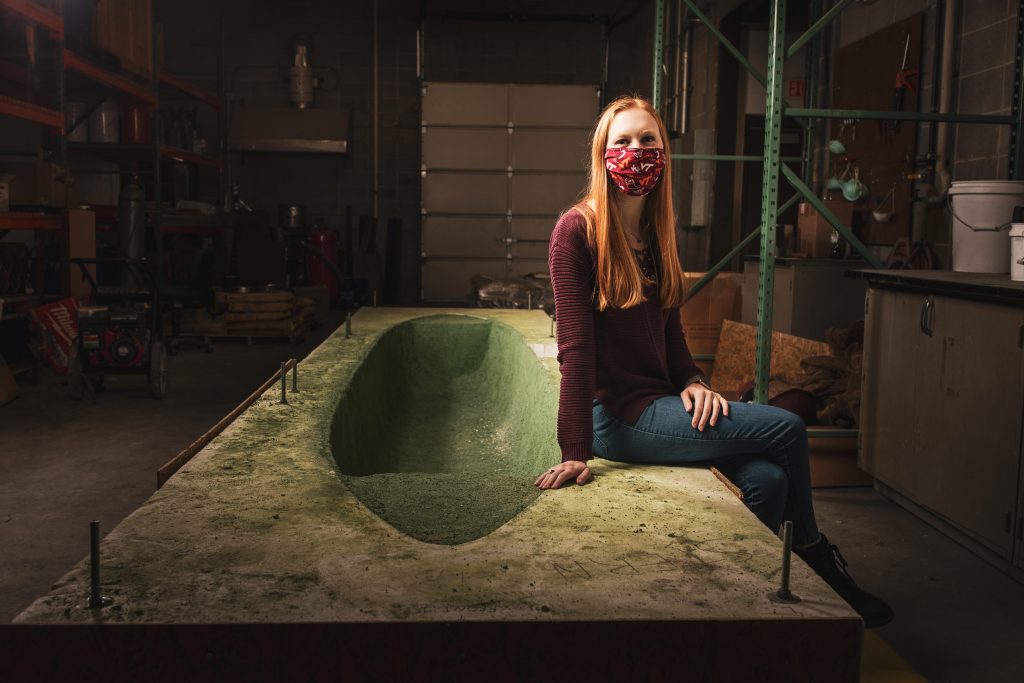Virginia Tech Concrete Canoe team breaks a sixteen-year winning streak in regional competition
Concrete is heavy, which makes it strong and durable, so it’s considered a top choice as a material for construction projects, but not an ideal choice for a canoe because it sinks easily. Each year, the Virginia Tech Concrete Canoe team takes on that challenge – of making something easily sinkable float – to build a canoe that will not only stay afloat, but can be raced in water.

During each competition cycle, the team designs, constructs, and races a 20-foot-long canoe made entirely out of concrete. The team spends about nine months designing the canoe’s hull, concrete mixture design, and mold form. Once the structural properties are identified, they test the concrete for its compressive, tensile, and flexural strength.
In the spring semester, the team forms the canoe and concrete is hand placed and allowed to cure for 28 days. Normally, the team then takes the canoe to the regional competition, where they are judged on a technical paper, presentation, canoe appearance, and racing times.
Due to the pandemic, the 2012 competition was entirely virtual, which means the team did not get to race their canoe. Instead, the team was tasked with submitting only their proposal for the development of a standard canoe, explained team captain Jessica Viehman.
This included many of the same initial steps of performing structural calculations and mixture design calculations, but kept the team competing solely in theory.
“The team then developed a complete design report with the projected schedule and construction techniques that we presented via Zoom,” said Viehman.
By winning the regional competition, Virginia Tech will be competing in the national competition hosted virtually by the American Society of Civil Engineers on June 25-27. The winner from each of the 20 conferences will join to compete at the national competition.
“It was nice to be able to use what I’m learning in my classes to participate in a hands-on experience that relates to my future career,” said team captain Nawras Zalzala.
Virginia Tech’s team was smaller this year, with about 10 active members. Usually, there are up to 50 team members that are involved in all stages of the design and building process, [might want to qualify this more, like: but Covid-19 and the virtual work format it created presented challenges to recruiting new members]. Despite the smaller team, all of the team members agreed that the most worthwhile part of the experience was seeing their hard work pay off with a win in the regional conference.
“The most rewarding part was being able to virtually celebrate with my teammates,” said team captain Zachary Hill. “Bringing the win back to Virginia Tech after 16 years made the late nights, lack of sleep, and hard work worth it.”